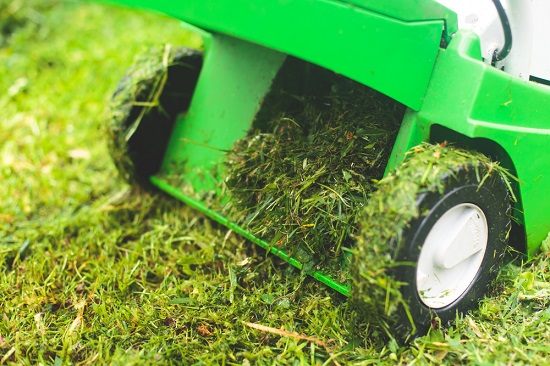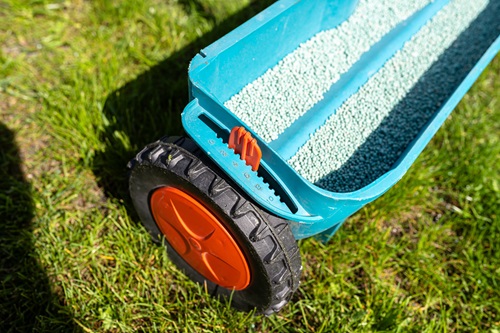
It’s time to care for your lawn! These are our top tips to maintain a healthy lawn during the growing season. Proper watering, fertilizing, sun exposure and weed control are key factors in growing grass. It is easier to let nature do the hard work than you. Check out our lawn care tips.
The Great Lawn Care Debate
As a recreational surface, grass is the best. It’s better than concrete and has a positive impact on the environment by regulating temperatures and purifying the air.
However, lawns have a dark side. This is due to the excessive use of synthetic chemicals. The U.S. has used more synthetic chemicals on its lawns than what India has on its food crops. Suburband and urban residents are more exposed to pesticides than rural counterparts.
Lawns have existed for hundreds of years without heavy chemical use. Beautiful lawns (and gardens), on American estates and homes were common before World War II. Many European lawns don’t use chemicals.
Take a look at our suggestions and consider ways to decrease your dependency on the chemical industry. Grass doesn’t have to be green!
General Lawn Care Tips
You can mowing your lawn without using a bag. The grass clippings can be left to feed the lawn. You can also use a modern mulching mower to cut the grass into manageable pieces for your lawn.
Mix low-growing flowers such as red clover and white clover with your grass seed to increase the nitrogen fixer. This is why clover is often added directly to grass seed. Clover is low to the ground, smells great after being cut and can often stay green even after other lawns have turned brown. Check out our article about clover.
You might consider converting some of your lawn to meadows. You can let wild grasses, dandelions and wildflowers grow in a meadow or slightly wild lawn, which will add color and variety to the landscape.
You can let more sunlight in if trees or shrubs shade your lawn by cutting and removing lower branches. Seed in the shaded areas with 5 lbs./1000 square. Red fescue is about 3.5 ft.
1. Do not forget about the soil!
Let’s start with the “secret” of a healthy lawn, which we seldom see in any lawn care brochure. Nourish your soil! Fertilizer is not meant to feed soil. It is a fertilizer that feeds plants. Organic matter provides nutrients for plants by providing soil with food. Organic matter also suppresses weeds, and prevents plant disease.
When you plant new turf grass, make sure to work the compost 2 to 3 inches deep into the soil. Use manure-based compost if you can. Manure can be used as a natural fertilizer to add nutrients to the soil. Manure rich in nitrogen is best for lawns as it encourages green growth.
We recommend topping-dressing existing lawns with 1/4 inch manure rich compost once per month during the growing seasons. High levels of nitrogen and phosphorus can keep your lawn healthy. This will make the soil porous and drain more efficiently, which can help prevent root rot.
You’ll see a healthier lawn and less weeds by simply adding the first step of nourishing your soil. Continue to top-dress the soil with 1/4 inch compost each year and continue building it.
2. Fertilizing Your Lawn
SPRING: You will need to apply a balanced complete fertilizer (organic and synthetic). There is much debate over when fertilizer should be applied. To give the turfgrass a boost and to stimulate recovery from a long winter, some experts recommend that you apply a quick-release fertilizer in the early spring (late march/April). Others recommend waiting until the spring to apply slow-release fertilizer. This will replenish the root’s carbohydrate reserves, which could be low. Your lawn will thank you for a light application of fertilizer in spring. Don’t overdo it.
If your lawn is covered in thatch, it may be necessary to dethatch it. A spongy lawn is an indication that your lawn has too much thatch. If you try to get your finger in the soil, it will be too hard to reach. Dethatching can be very difficult on tender young grass shoots, so wait until the spring. Find out more about dethatching.
SUMMER: Fertilize your lawn in late summer (September is fine) to help it recover from the summer stress. This will develop your root system for winter. This will help prevent injury and disease during winter.
Common cool-season grasses include Kentucky bluegrass and perennial ryegrass.
Use high-nitrogen fertilizer at a rate of 0.5-1 lb annual nitrogen per 1,000 sq. feet
3. Lawn Care
Preventing weeds is the key to success! Remember that there are many products for controlling weeds that can be used organically and not chemically.
PRE-EMERGENCY CROUGHS CONTROL: Prevent annual crabgrass by using pre-emergent crabgrass controls. You have a limited window to control crabgrass. For three consecutive days, the soil temperature must be at 55°F. Crabgrass will quickly spread once temperatures rise to 65-70degF.
SPRING: Spring is the best time to apply broadleaf herbicides to keep perennial weeds under control. We would not use broad weed treatments to the lawn if weeds have already emerged. You should inspect your lawn for weedy perennial grasses like bentgrass or coarse fescue. If you find them, either dig them out and/or spot treat with broadleaf herbicides.
Mulch can also be helpful in controlling weeds.
4. Seeding Your Lawn
SPRING: It’s a good idea to overseed and plant new grass seed in areas that are bare or have been tangled. If you are applying non-selective control weed control, don’t seed in the early spring as you will be killing grass seeds.
SUMMER: Seed new lawns in mild climates (not the south) between mid-August and mid-September. You can also seed the bare spots in existing lawns.
In the late summer or early fall, it is best to seed cool-season turfgrasses (Kentucky bluegrasses and perennial ryegrasses), lawns.
5. Mowing your Lawn
Properly mowing your lawn can make a huge difference in its health. Did you know that the height of a lawn’s cut has a direct correlation with how many roots it can sustain? These 5 tips will help you avoid making mistakes when mowing.
To avoid injury to your mower blade, pick up any sticks, leaves, or acorns that are on your lawn before you mow.
Keep your lawn mowed regularly but not too short. Although you may believe you are saving time, you will end up with a more ugly lawn than if your grass is cut at the right length. Do not mow more than 1/3 of the grass blades in one go. Constant scalping can reduce turf density and create opportunities for weeds.
In the past, 1.5 inch was the recommended cutting height. For cool-season grasses, it is recommended to maintain a height of 2 1/2″-3 1/2″. Southerly locations should keep warm-season grasses at 1 1/2″-2 1/2″. Higher-cut lawn grasses can withstand more stress. This is particularly important in the summer heat. Higher density grasses have a significant shading effect on the soil surface. This reduces the likelihood of weed seeds germinating, especially crabgrass. This is a great way to reduce herbicide usage.
When the grass is not wet, mow it.
To prevent grass from being ripped (which can also lead to disease), keep the blades clean when mowing your lawn.
Clippings from lawns provide nutrients that soil needs, so it is important to keep them in place after each mowing. Clippings, along with manure dressing, are all that healthy lawns need. Clippings should be left on the lawn for a few days to allow nutrients to seep into the soil and decompose.
Spade the edges between lawn and beds, and remulch planting trees rings and lawn beds to protect them from mower nicks.
You can use a grass trimmer to cut flower beds and other areas that the mower cannot reach. You should not use a trimmer to cut the grass around tree trunks. You could damage the bark and expose the tree to pests and diseases. It is easy to accidentally cut off garden flowers.
6. Watering your Lawn
Throughout the growing season, keep your water intake at a minimum of 1/2 to 1 inch per week.
Water heavily in the morning and water well. Allow the water to soak into the roots for at least 30 minutes. Shallow watering promotes weak root growth and weeds. To penetrate 6-8 inches of soil, it will take approximately an inch of water. To measure the water amount, place shallow cans in your sprinkler area.
Don’t overwater. The lawn will find its own water source, which will help it grow stronger roots. Reduce water consumption, especially in the middle of summer, to allow your lawn to go dormant and strengthen it for fall or winter.
Overwatering can lead to the loss of nutrients and attract insects. Lighter waterings are better than deep waterings for lawns.
Reduce fertilizer usage during droughts.
Additional Lawn Care Tips: Aerating your Lawn
Aerating your lawn is an option if you have problems with heavy thatch and hardened soil. Aeration involves the mechanical removal of small pieces of soil and thatch from your lawn to allow air, water and nutrients to reach the roots. A healthy lawn is dependent on root growth.
Many home lawns have a disturbed natural soil. Often, fertile topsoil was taken away. This left subsoil that is less compact, clay-rich, and less suitable for healthy lawn growth. Even if topsoil was added before the lawns were planted, it is usually too thin to support proper rooting. It will reach 8 inches below the surface. The soil is further compacted by walking on it and irrigation.
You can rent an aerator at your local hardware store or hire a lawn care service in Myrtle Beach to do it. Fall is the best time to aerate. Aeration will accelerate thatch degradation and allow oxygen and water to reach the roots. It will also increase fertilizer uptake.
Like our Facebook page for more great info about lawn maintenance.
Call Conner’s Lawn Care Service now if you need expert help in taking care of your lawn.
Conner’s Lawn Care Service
Myrtle Beach, SC
843-504-4901
http://connerslawncare.com/


No comments:
Post a Comment